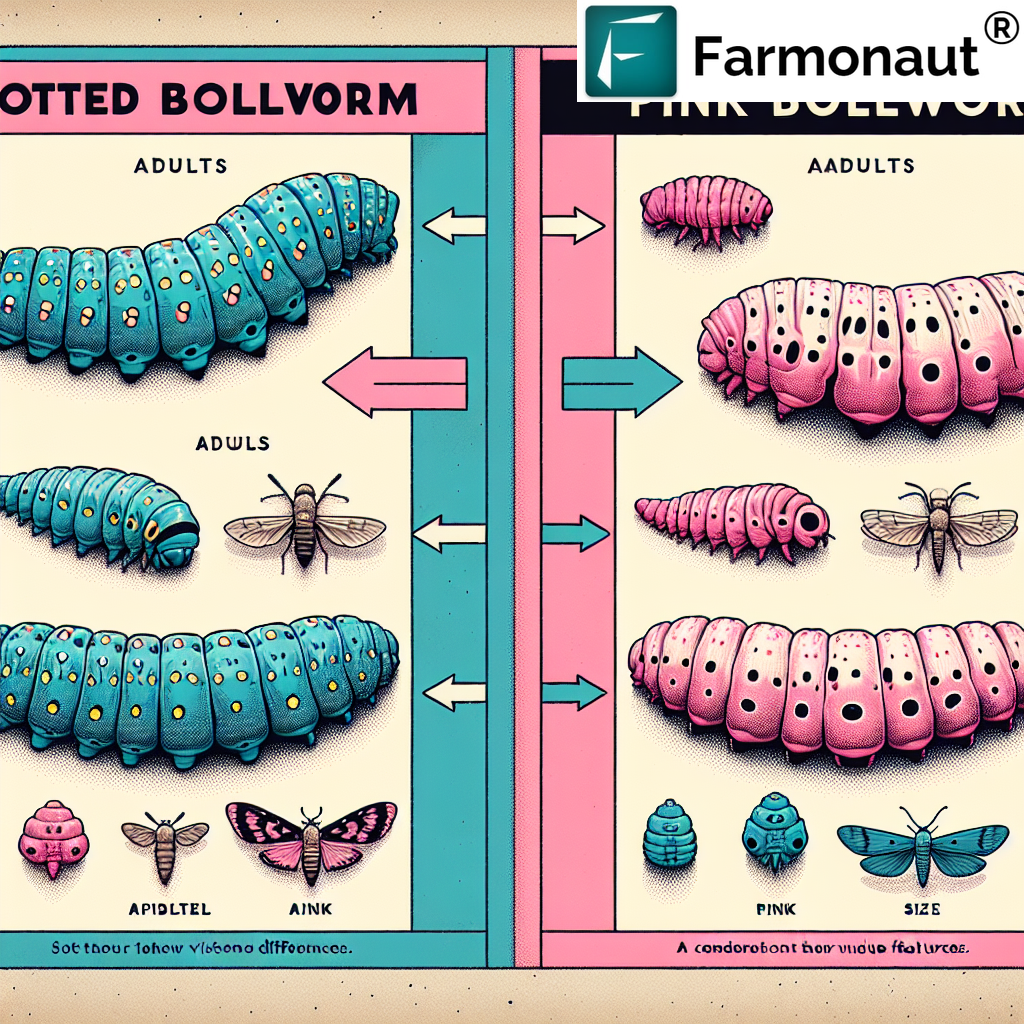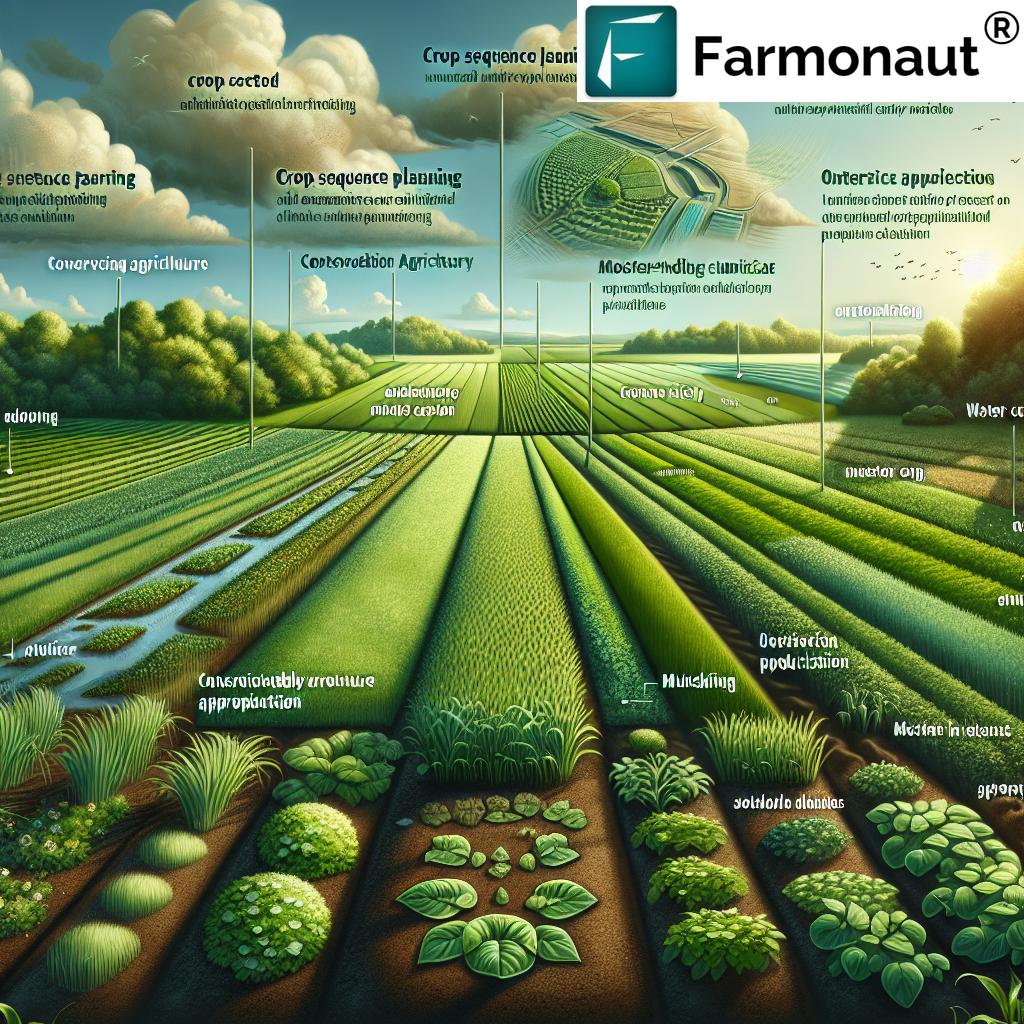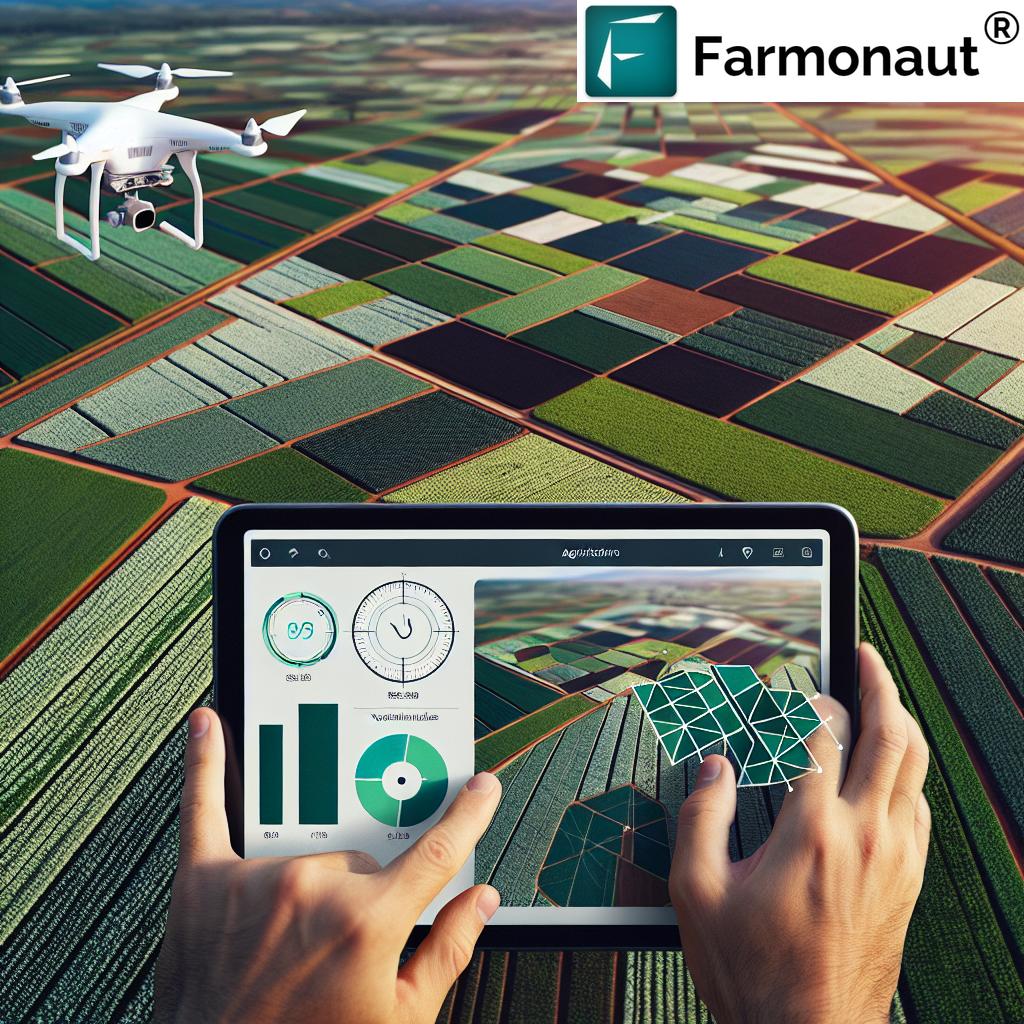Sow Farming Technology & IoT: 7 Breakthroughs for 2025
Advancements in Farming Technology: Transforming Agriculture in 2025
“By 2025, over 60% of sow farms are projected to adopt IoT-based monitoring systems for precision agriculture.”
The agriculture sector is undergoing an impressive transformation, powered by the rapid development and deepening integration of new technology of farming. In 2025, farming emerges not as a traditional practice, but as a sophisticated, data-driven industry that leverages advancements like sow farming technology, IoT farming technology, precision agriculture, and specialized breakthroughs in rice farming technology. From real-time sensors and smart devices to automation and AI-driven advisory systems, these innovations are not only enhancing crop yields and sustainability, but also rapidly improving farmer livelihoods across the globe.
In this blog, we’ll explore the top 7 technological breakthroughs for 2025 reshaping both sow and rice farming—from IoT-driven livestock management to climate-smart data analytics, and see how these technologies are set to empower farmers, address global food security challenges, and make agriculture more sustainable and profitable than ever before.
Sow Farming Technology in 2025: Transforming Pig Farming with Intelligent Automation
Sow farming technology in 2025 represents a revolutionary shift in the breeding and rearing of female pigs—a cornerstone activity in the global pork industry. Leveraging automation, sensors, and powerful analytics, the new wave of technology is enabling precise monitoring of livestock health, optimized feeding schedules, improved reproduction rates, and enhanced productivity.
Key Components of Sow Farming Technology
- Automated Feeding Systems:
Modern feeders use smart sensors and AI algorithms to provide tailored nutritional feed portions to each sow. This reduces wastage and maximizes growth rates while ensuring pigs receive the precise balance of nutrients required for optimal health and breeding efficiency. - Health Monitoring through Wearables:
Devices like smart collars and ear tags monitor vital parameters—temperature, movement, heart rate—enabling early detection of disease or stress. Swift interventions are possible, improving animal welfare and lowering veterinary costs. - Reproductive Management:
IoT-connected cameras, advanced ultrasound, and AI-based heat detection help pinpoint best breeding times, leading to higher fertility rates, healthier litters, and fewer failed pregnancies. - Climate-Controlled Housing Systems:
Smart sensors continuously monitor barn temperature, humidity, and air quality, managing automated venting and cooling/heating. Such systems significantly reduce piglet mortality and disease susceptibility.
By enabling remote monitoring and control, sow farming technology is empowering farmers to achieve higher yields, reduce costs, and foster more sustainable livestock operations.
Benefits for Farmers
- Reduces manual labor via automation and remote management tools
- Detects health issues early, reducing disease spread and treatment expenses
- Improves feeding efficiency and animal growth rates, leading to higher profits
- Lowers environmental impact through precision resource and waste management
These advancements collectively contribute to greater herd health, productivity, and sustainability—crucial for the future of the pork industry.
IoT Farming Technology: The Backbone of Smart Agriculture
IoT farming technology is fundamentally reshaping how farmers manage their crops, livestock, soil, water, and machinery. With the integration of connected devices (Internet of Things) across fields and barns, every aspect of agriculture is now measurable, manageable, and optimizable in real time.
IoT Applications Driving the Agricultural Revolution
- Soil and Crop Monitoring:
- Sensors track moisture, pH, nutrient content, and temperature of soil in real time.
- Smart irrigation systems draw on this data to provide crops with only the water required, minimizing waste while improving yields.
- Livestock Tracking & Management:
- Tags, collars, and smart feeding stations monitor health, location, feeding patterns, and even stress in sow and cattle herds.
- Enables timely interventions and disease detection.
- Machinery Automation:
- Tractors, drones, harvesters with GPS and IoT devices perform planting, spraying, and harvesting with minimal human input.
- Increases precision, reduces labor costs, and boosts operational efficiency.
- Data Analytics & AI Integration:
- AI-driven analytics process the data collected, offering actionable insights on weather patterns, pest outbreaks, and optimal resource deployment.
- Forecasts crop yields and resource requirements with higher accuracy, optimizing farm profitability and sustainability.
Combined, these technological breakthroughs result in smarter, more resilient agriculture—minimizing resource waste, maximally leveraging inputs, and improving food security for an ever-growing population.
New Technology of Farming: 2025’s Top Innovations
Emerging Technologies That Are Revolutionizing Farming
- Precision Agriculture:
- Use of GPS-guided tractors, drones, and satellite imagery to deliver inputs (seeds, fertilizer, pesticides) with surgical precision at the micro-field scale.
- Increases yields, reduces environmental impact, and cuts input costs.
- Farmonaut’s platform uses multispectral satellite data for real-time large-scale farm management and personalized plantation advisory for all field crops.
- Robotics & Automation:
- Autonomous machines, drones, and robots now perform planting, weeding, picking, and even pest monitoring, streamlining labor-intensive farming tasks.
- Enhances speed, accuracy, and profitability while addressing labor shortages.
- CRISPR & Genomic Technologies:
- Gene-editing tools like CRISPR are used to create crop varieties with enhanced resistance to disease, pests, drought, and salinity—ensuring stable, increased yields in the face of climate change.
- Vertical & Indoor Farming:
- LED lighting, hydroponics, aeroponics, and precise climate controls make it possible to grow crops year-round in urban settings using minimal land and water.
- Ideal for areas with limited arable land or challenging climates.
- Blockchain for Supply Chain Transparency:
- Blockchain technology ensures every step of the farm-to-table journey is tracked and tamper-proof.
- Farmonaut’s blockchain-based traceability solution helps corporate clients track agricultural and food products to build supply chain trust and combat fraud.
These innovations are fundamentally changing how crops are grown, monitored, harvested, and moved through the global food system, paving the way for a smarter, more efficient, and sustainable agricultural sector.
“Rice farming innovations in 2025 are expected to boost average crop yields by up to 25% globally.”
Innovations in Rice Farming Technology: Feeding Billions Sustainably
As rice is the cornerstone food for more than half of the world’s population, rice farming technology advances have a significant and immediate impact on global food security. In 2025, the following technologies are leading the charge towards higher yields, smarter resource management, and climate resilience.
Key Rice Farming Technology Breakthroughs:
- Direct Seeding Technology
- Using machine-driven direct seeding replaces arduous transplanting, saves labor, and shortens planting cycles—all while maintaining or increasing yield.
- System of Rice Intensification (SRI):
- SRI utilizes optimized planting patterns, precise water management, and soil aeration.
- Tech-driven SRI leverages remote sensing and real-time data from IoT devices to maximize yield with reduced inputs.
- Drones for Crop Surveillance:
- Drones equipped with multispectral cameras can monitor vast rice fields for pest, disease outbreaks, and nutrient deficiencies, alerting farmers for timely intervention.
- Optimizes fertilizer and pesticide application.
- Automated Water Management:
- Smart irrigation systems with sensors maintain optimal water levels for rice paddies, significantly reducing water use and risk of drought loss.
- Improved Rice Varieties via Biotechnology:
- New seed varieties resistant to drought, salinity, and pests (thanks to CRISPR and gene-editing) provide sustainable solutions for regions facing climate challenges.
- Boosts productivity and reduces input costs.
Farming Technology for Farmers: Making Innovation Accessible
A defining goal for farming technology in 2025 is to empower all farmers—from smallholders to commercial agribusinesses—with intuitive, affordable, and effective tools. Accessibility is now a core design principle.
Farmer-Centric Innovations Fueling Agricultural Transformation
- Mobile Apps & Digital Platforms:
- Apps give farmers access to weather forecasts, pest alerts, satellite imagery, market prices, and expert advisory services—often in regional languages.
- Farmonaut’s app and API (web/mobile app, API access) provide real-time crop health monitoring, AI-driven insights, and traceability to farmers, cooperatives, and agribusinesses worldwide. For API integration, see our developer documentation here.
- Affordable Sensor and Soil Testing Kits:
- Low-cost sensors for soil health monitoring give even small-scale farmers data-driven decision-making capability—without heavy upfront investment.
- Online Training & Extension via Immersive Reality:
- Virtual Reality (VR) and Augmented Reality (AR) simulations bring best-practice training to rural and remote farmers.
- Digital Microfinance and Crop Insurance:
- Digital platforms now simplify access to crop loans and insurance, reducing risk and helping farmers weather climate volatility. Farmonaut’s crop loan and insurance solutions enable satellite-based verification and support for financial access.
- Community Innovation Hubs:
- Local hubs encourage knowledge sharing, technology demos, and support adaptive innovation at the grassroots level.
With near-instantaneous access to critical data and low-cost tools, even traditionally underserved farmers are now positioned to enhance productivity, optimize resource use, and improve livelihoods.
Interested in tracking your farm’s environmental footprint? Visit our carbon footprinting product page for real-time carbon emissions reporting.
Farmonaut: Satellite-Powered Precision for All Farmers
At Farmonaut, we are committed to transforming sow farming technology, rice farming technology, and agricultural management through affordable, AI-powered satellite technology. By making precision agriculture accessible to every farmer, we help optimize resource use, manage risks, and drive sustainability.
Farmonaut’s Core Technologies and What They Offer
- Satellite-Based Crop Health Monitoring:
- Uses multispectral satellite imagery to assess vegetation health, soil moisture, nutrient content, and stress factors across fields.
- Empowers farmers to make informed decisions about irrigation, fertilizer application, and pest management with higher precision.
- Jeevn AI Advisory System:
- Delivers personalized crop management advice based on real-time data, weather patterns, and AI-driven risk models.
- Improves yields, efficiency, and farmer decision-making.
- Blockchain-Based Traceability:
- Ensures end-to-end transparency for agricultural products.
- Strengthens chain-of-custody and consumer trust in food quality and origin.
- Resource & Fleet Management:
- Manages machinery, vehicles, irrigation systems, and logistics for efficient and safe farm operations through one dashboard.
- See more about optimizing your agricultural fleet here.
- Carbon Footprinting for Sustainable Agriculture:
- Tracks carbon emissions per field, supporting environmental compliance and eco-friendly practices.
Our platform supports individual farmers, agribusinesses, governments, and corporate supply chains—all through web/mobile dashboards and APIs. Want to experience the benefits? Try our app below:
Want scalable farm management? Our Large Scale Farm Management platform offers advanced monitoring and planning for agribusinesses and cooperatives across continents.
Farmonaut Subscription Options
We operate on a flexible subscription model. Explore real-time solutions, choose your plan, and join the smart agriculture revolution:
Emerging Technologies & the Future of Farming: 2025 and Beyond
Looking forward, farming technology in 2025 and beyond will be defined by systems that are:
- Predictive: Integrating AI, weather modeling, and blockchain for proactive risk management
- Interconnected: All-in-one farm dashboards, smart devices seamlessly communicating to orchestrate irrigation, feeding, disease detection, and logistical operations
- Sustainable: Focused on reducing environmental impact with water-efficient systems, climate-resilient crops, and carbon accounting
- Inclusive: Technology designed with farmers’ real-world needs in mind: user-friendly, low-cost, scalable, and multi-lingual
As global population growth strains food security and environmental resources, only farms embracing technology and innovation will thrive. The march towards fully-integrated, data-driven agriculture is well underway—and the rewards, for farmers and society, are enormous.
Comparative Innovation Impact Table: 2025’s Breakthroughs in Sow & Rice Farming Technology
| Breakthrough Technology | IoT Application | Estimated Yield Increase (%) | Estimated Resource Savings (%) | Projected Adoption Rate (2025, %) | Farmer Benefit |
|---|---|---|---|---|---|
| Smart IoT Sensors (Soil & Livestock) | Precision monitoring of soil moisture, nutrient content, and animal health | 10–22% | 20–45% (water); 10–30% (inputs) | 60% | Cost reduction, higher yields, early disease detection |
| Automated Feeding Systems | Tailored nutritional provision to individual sows | 8–16% | 10–20% (feed) | 52% | Feeding waste reduction, improved animal growth, labor savings |
| Drones & Satellite Monitoring | Field health, pest, disease, and irrigation needs | 12–25% | 25–35% (inputs, labor) | 48% | Higher productivity, faster response to threats |
| Smart Irrigation Systems | Automated, data-driven water application | 8–15% | 25–60% (water) | 42% | Water savings, stable plant growth, higher profits |
| Blockchain Traceability | Transparent farm-to-market supply chain tracking | 0% (Indirect) – Ensures food quality/brand value | 5–10% (lost/fraud reduction) | 22% | Trusted trade, consumer confidence, fraud minimization |
| System of Rice Intensification (SRI) | Integration of planting, irrigation, and soil data to optimize yield | 20–28% | 15–35% (water & fertilizer) | 38% | Yield boost, resource savings, less environmental stress |
| Wearables for Livestock | Continuous health & behavior monitoring | 5–10% (mortality reduction) | 5–15% (treatment/prevention) | 55% | Animal welfare, lower costs, improved output |
Frequently Asked Questions – Sow Farming Technology & IoT Breakthroughs
-
What is sow farming technology and how does it improve productivity?
- Sow farming technology integrates automation, sensors, and data analytics to optimize the breeding, rearing, and health of female pigs. Tools such as automated feeding and wearable health monitors help farmers reduce labor, improve animal welfare, and increase profitability.
-
How does IoT farming technology enhance agricultural efficiency?
- IoT farming technology allows real-time monitoring of crops, livestock, and machinery through smart devices. This enables farmers to make data-driven decisions on irrigation, fertilization, feeding, and disease treatment—resulting in higher yields and reduced resource wastage.
-
What are the latest innovations in rice farming technology for 2025?
- Key rice farming technology advancements include direct seeding, SRI (System of Rice Intensification), drone field surveillance, smart irrigation, and genetic improvements for stress resistance and yield. These technologies collectively improve productivity and sustainability for rice farmers.
-
Can smallholder farmers access modern agricultural technologies?
- Yes! Solutions like affordable sensors, mobile digital platforms, and training hubs are making precision agriculture accessible even for small-scale farmers, allowing them to benefit from innovations regardless of farm size.
-
How does Farmonaut support farmers in adopting modern technology?
- We offer a cloud-based platform and mobile app featuring satellite-powered crop health monitoring, AI advisory systems, blockchain-based traceability, carbon footprinting, and resource/fleet management—making precision agriculture simple and affordable for all farmers.
-
Where can I find more information or try Farmonaut’s solutions?
-
Explore our Web App, Android App, or iOS App.
For API/data integration, see our API and developer docs.
-
Explore our Web App, Android App, or iOS App.
Conclusion: The Smart, Sustainable Farming Future is Now
Sow farming technology and IoT farming technology represent just the tip of an innovation iceberg that is rapidly transforming agriculture in 2025 and beyond. By combining breakthroughs in automation, sensors, artificial intelligence, satellite data, and blockchain, farmers now have access to systems that empower precision, sustainability, and profitability.
We’re witnessing a future where both sow and rice farmers—regardless of their location, land size, or resources—can use modern technology to boost yield, minimize environmental impact, and secure their livelihoods. As challenges around climate change, population growth, and resource scarcity intensify, these technological advancements will be pivotal in addressing global food security and shaping a sustainable planet.
The farm of tomorrow is truly smart, connected, and innovative. Join us on this journey—explore how Farmonaut can help transform your farming success with precision, data, and cutting-edge solutions today.














